As a marketer, you are likely under constant pressure to deliver measurable growth. For app businesses, that means maintaining visibility in app stores, optimizing listings (ASO), running multichannel campaigns, A/B testing, driving user engagement—the list goes on.
To maximize ROI, your app marketing needs to be smarter and more scalable than ever. In today’s AI-driven landscape, marketers have a powerful new advantage: Generative AI. Tools like ChatGPT, Perplexity, and Midjourney are transforming the way marketers think, create, and execute their work every day.
At SplitMetrics, we manage 1.6 million ad campaigns and $600M annual ad spend and see firsthand how the combination of human expertise and Generative AI unlocks scalable, sustainable growth.
In the following article, we share our learnings, along with practical, easy-to-implement examples that you can apply directly to your workflows.
The goal? To help you become an AI-powered app marketer who confidently uncovers and captures new opportunities – and fully leverages the potential of Generative AI to stay ahead.
Generative AI (think GPT-4, DALL-E) is a technology that creates new content — text, images, video, code — by learning from massive datasets. For app marketing, this means moving faster, ideating broader, and executing with greater efficiency.
In other words, Generative AI can significantly improve your existing app marketing workflows and areas:

Tools like ChatGPT, Perplexity and Claude utilize Generative AI to assist app marketers with specific tasks. And tools like Jasper, Canva and Notion are adding AI capabilities to enhance their core features.
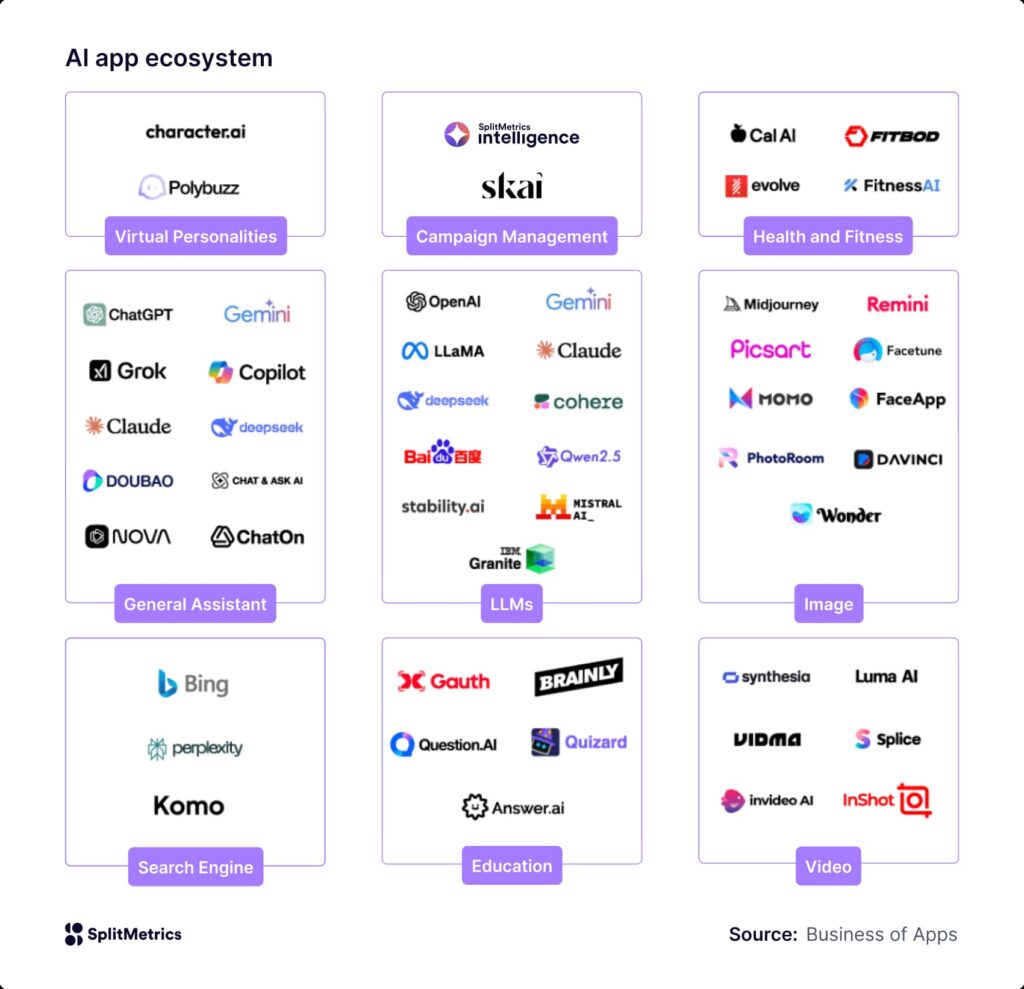
Generative AI helps you increase your marketing numbers by boosting your productivity levels and acting as a reliable assistant that is always available.
For app marketers, the crucial takeaway is that context is king: the quality of Generative AI’s output directly mirrors the clarity of your prompts.
A prompt is an input that a user provides to an AI system to obtain a desired result or output or the initial context or instruction that sets the task or query for the model.
However, Generative AI is a tool, not a replacement for your expertise. In our experience, you can encounter the following limitations:
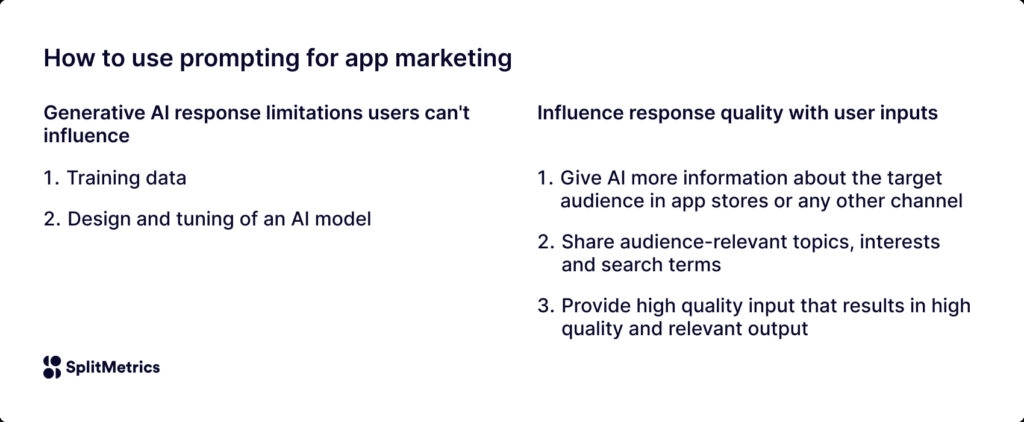
Balancing the power of Generative AI with essential human judgment is key. Once you understand the possibilities and limits, you can start working on different app use cases and turn yourself into an AI app marketer.
The objective isn’t to let AI dictate your strategy but to identify areas that free your time and allow you to focus on strategic and non-repetitive tasks.
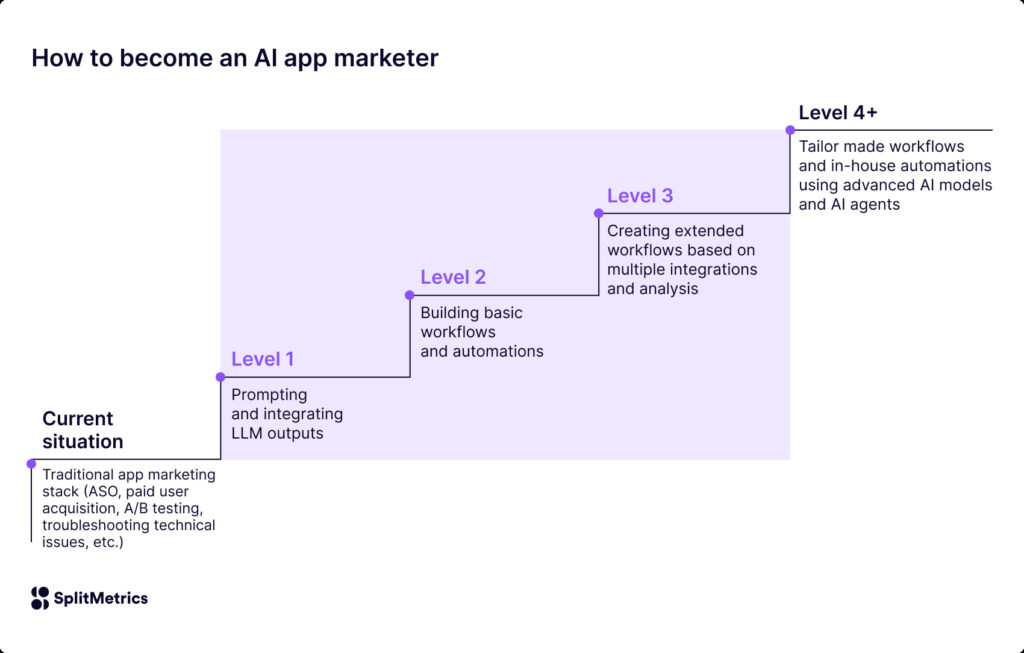
The AI community is very active in creating AI marketing workflows. Tools like n8n and Make allow you to connect different apps and services to automate workflows without writing code. However, to profit from this technology, you first need to be good at traditional app marketing – AI can’t fix inappropriate processes or work with flawed inputs.
Now is the time to explore some specific use cases.
To keep your app relevant year-round, one of the best practices is to refresh your store presence regularly — swapping in seasonal imagery and messaging that resonates with what users care about at the moment.
Generative AI tools can do the heavy lifting on these updates, providing you with both fresh ideas and guardrails to maintain your brand voice consistency across all touchpoints.
Let’s examine how top-performing apps are leveraging AI to optimize their seasonal marketing.
Generative AI helps generate diverse initial concepts while maintaining alignment with ASO requirements and brand guidelines.
One example is generating ideas for seasonal campaigns – a prompt like the following is a good starting point that you can tweak to fit your app’s unique audience and goals.
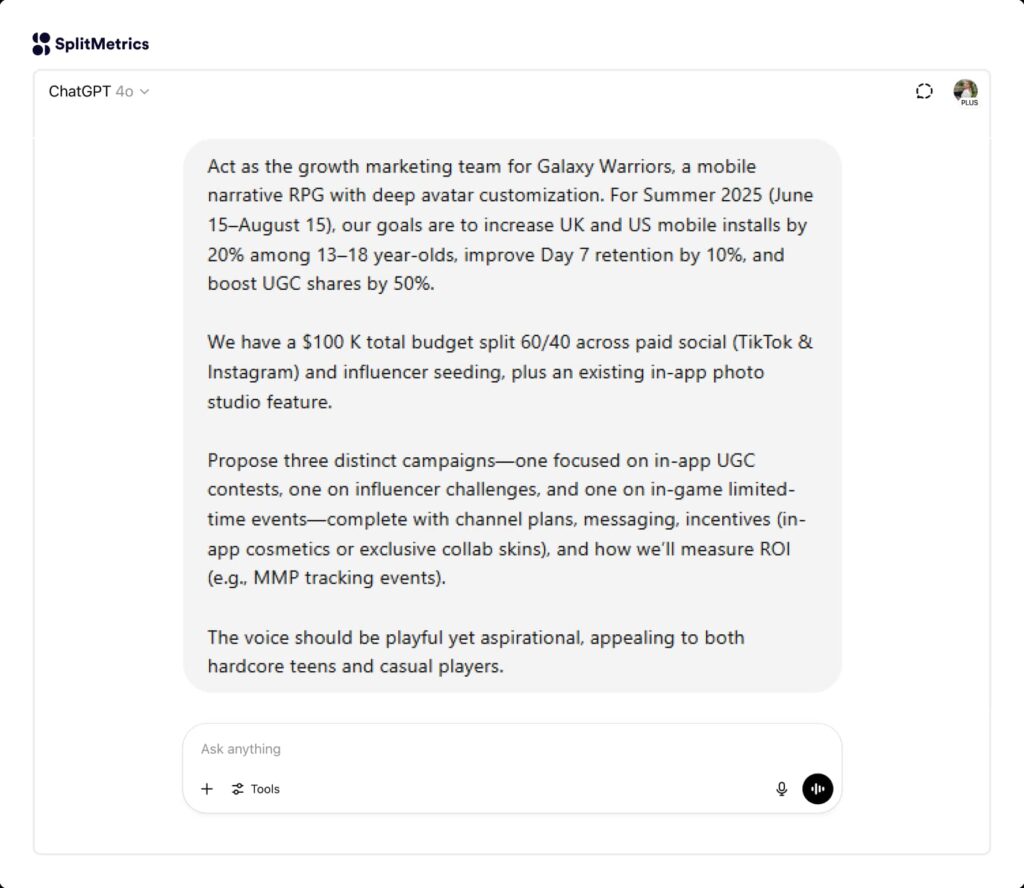
Another use case that app marketers often use for ASO improvements is working with multiple app store metadata variations. Below is an example of a detailed prompt that allows LLMs to provide a comprehensive response.
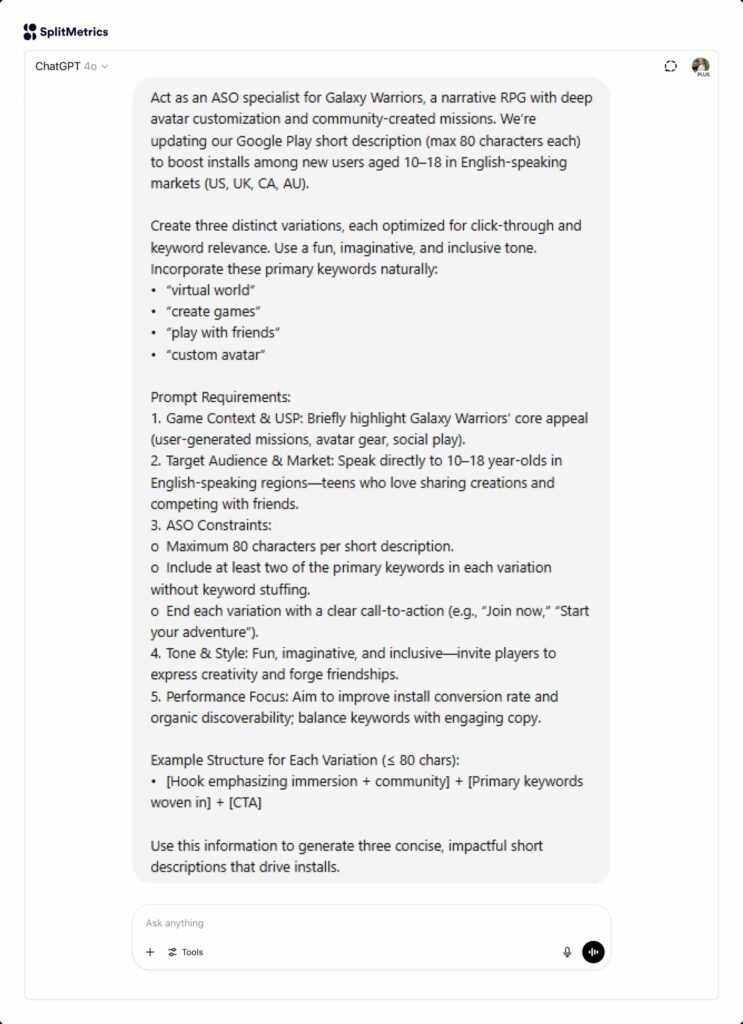
While AI excels at generating semantic variations and long-tail possibilities, it works best as a complement to traditional ASO tools, not a replacement. Generative AI can’t access any app store data, which means you need to combine both data sources.
The key is using AI to expand your keyword universe before filtering through ASO tools for search volume and relevance. This two-step process helps identify valuable seasonal terms that you might miss through traditional research alone.
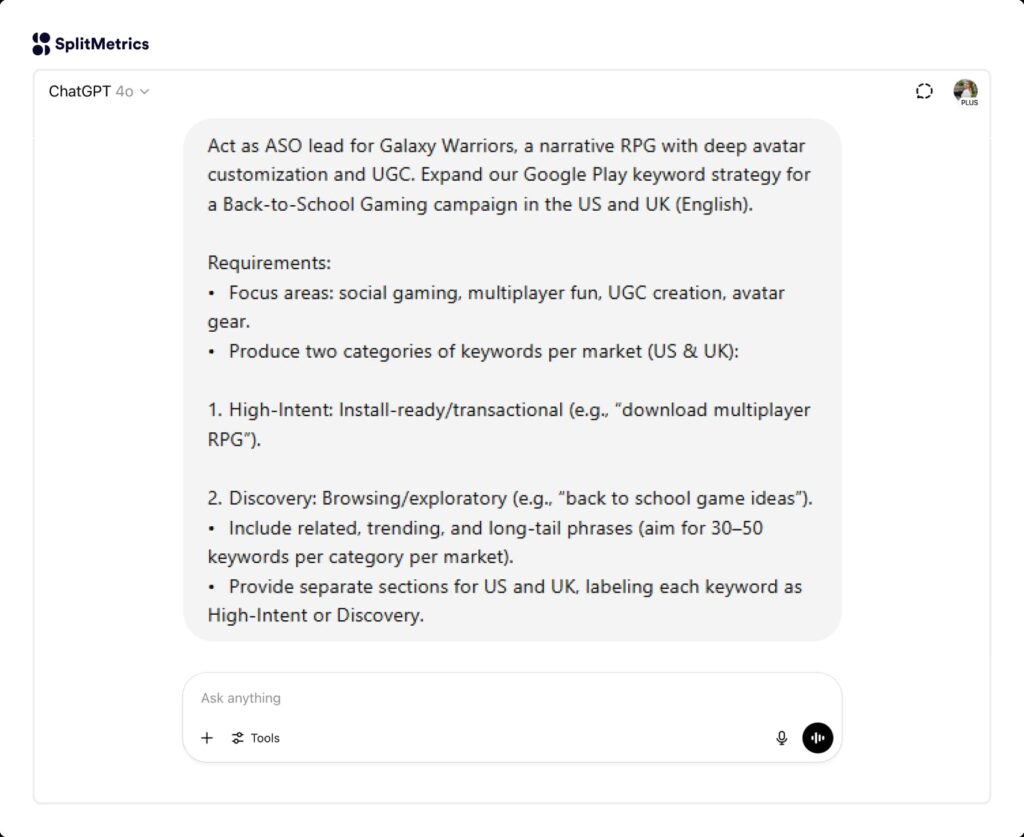
Always validate AI-generated keywords through ASO tools. AI excels at identifying semantic relationships, but it cannot accurately assess actual search volume or competitive difficulty.
For apps with an established international presence, the focus shifts to optimizing performance in markets that are showing organic traction.
Generative AI can analyze substantial amounts of data and market information. Thanks to this, it is much faster and easier to collect key points from market research or to summarize main insights from large text documents – something that previously required manual work and was prone to error.
With Generative AI, your team can scan insights from multiple market research documents much more quickly, while still capturing the details that matter for your specific app.
A well-thought-out and detailed prompt can look like this.
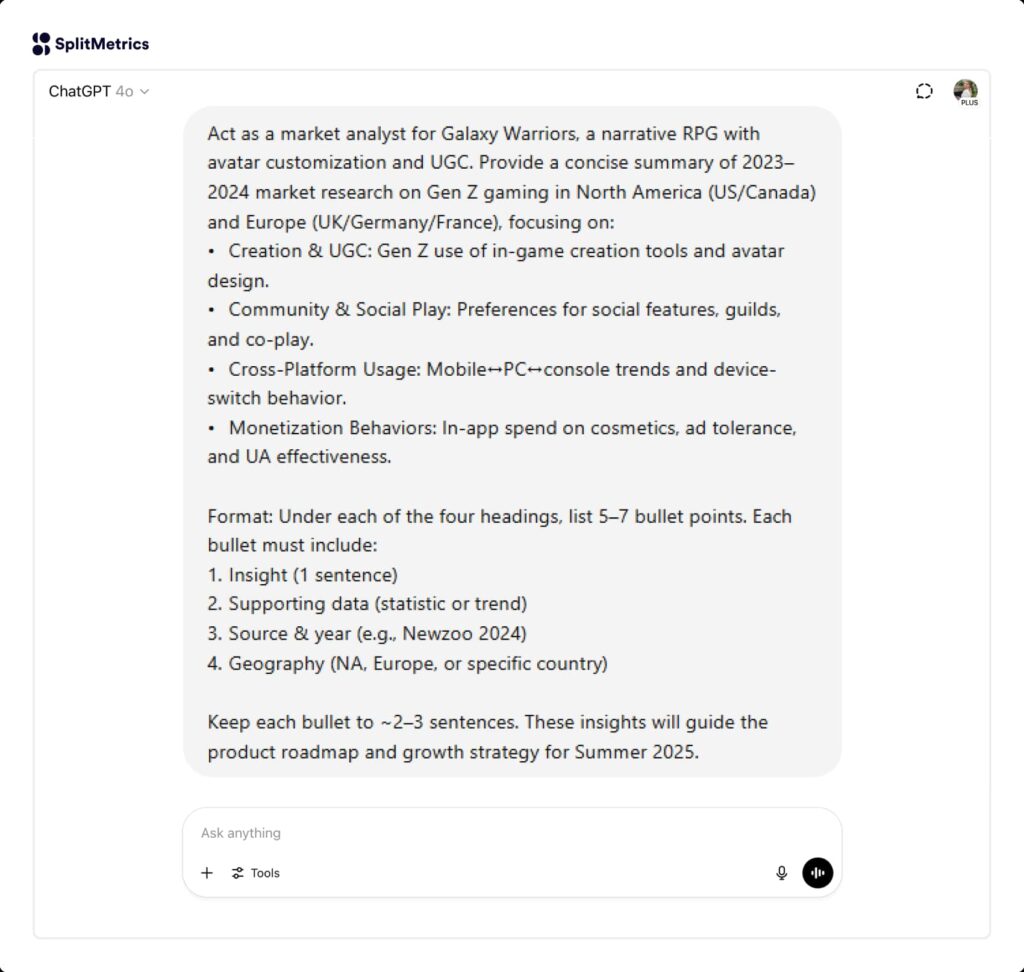
Breaking down app reviews by language can reveal what users love or hate about your graphics, which features they prefer and what their app experience looks like.
For example, you can use a prompt that focuses on your app’s specifics.
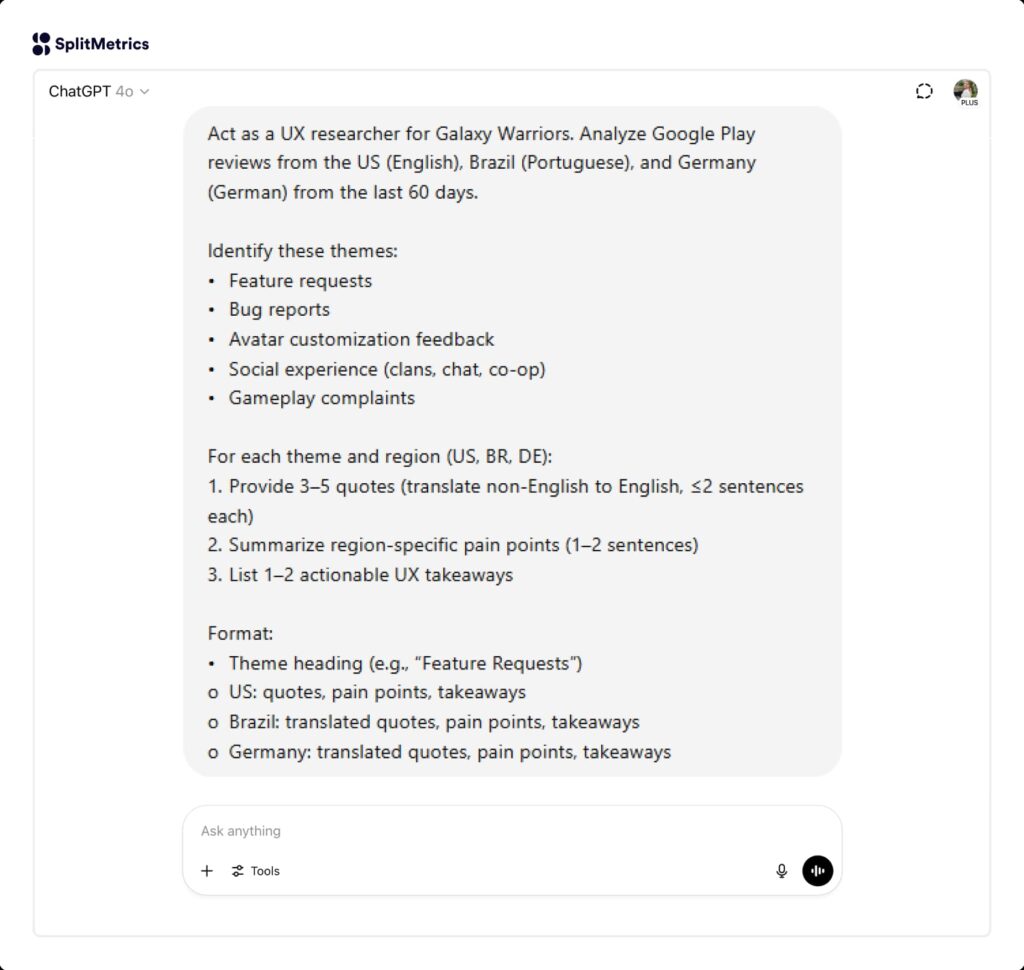
The results provide qualitative insights into user sentiment within your existing markets, which can support decisions about further investment or identifying the needs of underserved app users.
While traditional testing faces constraints in creative variation and analysis speed, AI removes these limitations while maintaining statistical rigor.
The key opportunity lies in expanding the test scope while reducing cycle time – from hypothesis generation through analysis. AI helps teams test more variations while delivering quality output.
The stronger your hypotheses – and the more A/B tests you can do – the higher your testing ROI will climb. AI helps you brainstorm more testable ideas that still follow that crucial ‘if we do X, then Y will happen because of Z’ structure.
A good prompt to use for this would look like this.
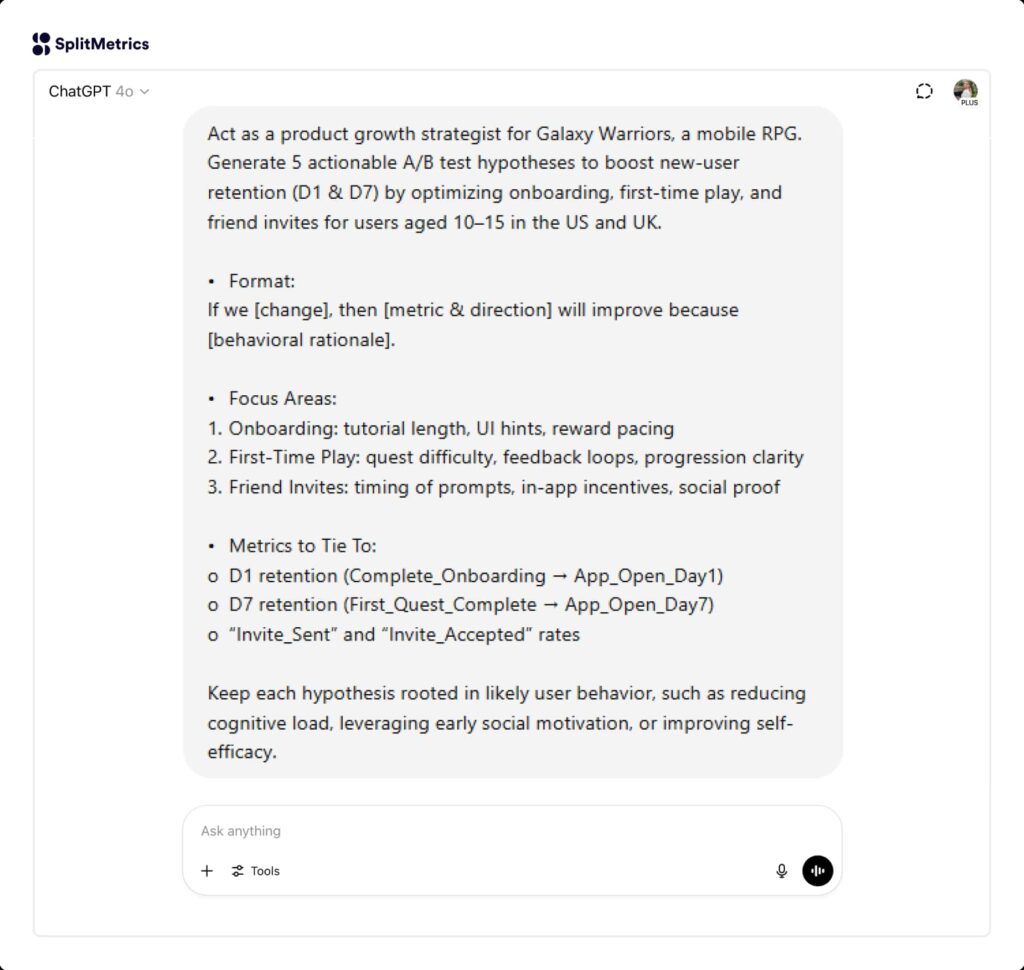
Using these kind of prompts, you’ll quickly craft more well-structured tests than your team could develop manually – each with clear actions, expected results and solid reasoning.
Working closely with major app names, we often see many teams that struggle to create visual variants quickly enough. AI changes that game completely. It quickly generates testable concepts for your store listings and campaigns so you can try more creative approaches across every channel without the usual design bottlenecks.
A solid prompt like the following one is another good starting point.
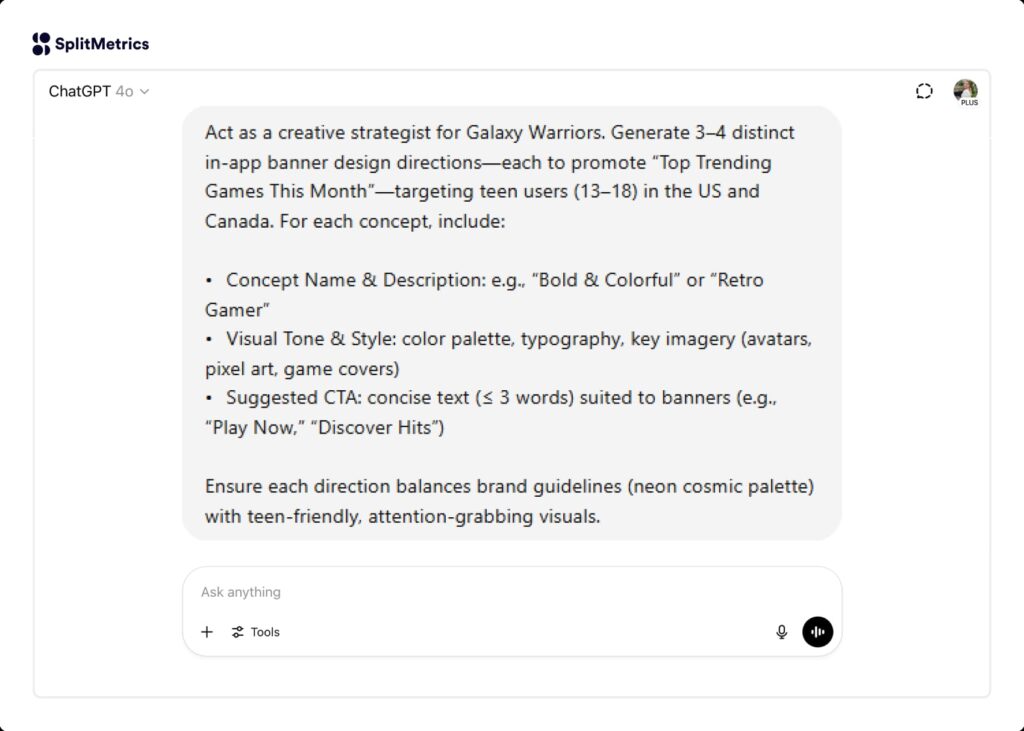
With the accelerated ideation of “big three” visual elements (icons, screenshots, video), you will have more opportunities to test bold changes or different stylistic angles.
A common scenario that app markers face is that creative bottlenecks slow campaign preparation and progress. While traditional approaches limit testing volume, AI unlocks rapid creative iteration across paid channels — from Meta Ads to Google UAC.
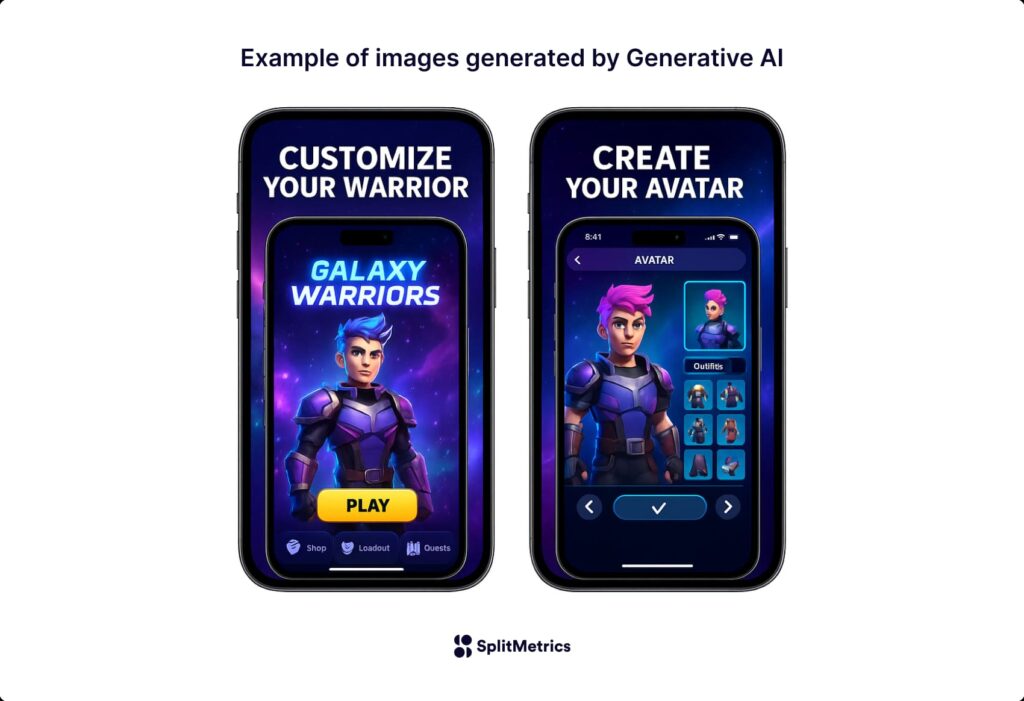
When asking Generative to create images, it is essential to note that these are nearly ready but not yet finished and polished app store assets. Your design team can take these quick ideas and run with them, saving hours in the early creative phase.
With a unified creative approach that streamlines asset generation for multi-channel activities, you can maintain brand consistency while dramatically increasing the outputs generated.
AI pushes your brainstorming beyond the usual ideas your team recycles. Generative AI helps find new angles that you didn’t think about before — while keeping it aligned with the core app positioning.
A prompt that is very specific and refers to your app metrics can help break creative clutter.
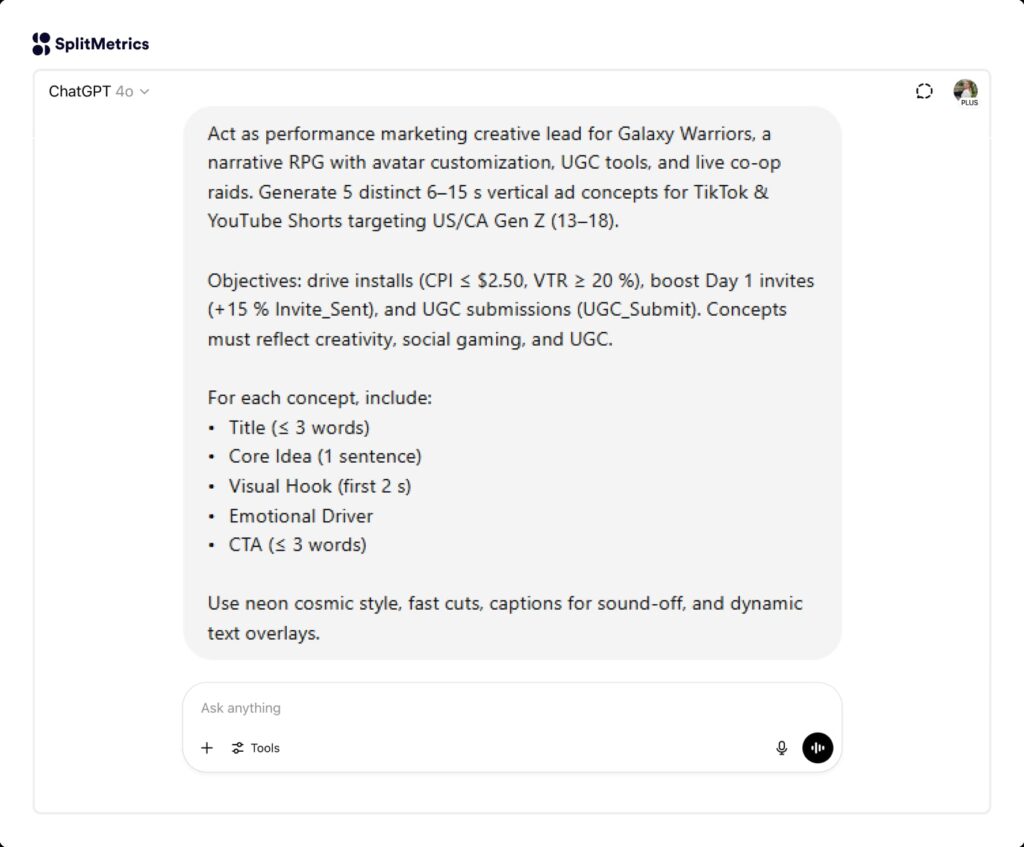
App marketers need a constant stream of fresh creative ideas to combat ad fatigue and test different angles. Combining simple prompts as a starting point and utilizing tools like Canva and its AI features can significantly speed up the process.
And tools like Pika and Runway are great for video prototyping, but even with those tools, the final production requires professional execution to maintain brand quality and consistency.
Some languages (e.g., German, Arabic) expand or contract significantly compared to English or use different reading directions. AI tools (often within design platforms) help preview and suggest layout adjustments for text overlays on existing visuals to maintain readability and aesthetic balance.
While it’s easy to get excited about Generative AI’s potential and use cases, the real work happens when you try to implement these systems from scratch — and that’s where most teams hit roadblocks.
At SplitMetrics, our mobile experts follow a different approach – the one that helps you find your unique AI use case without simply reusing 3rd party workflows that you can’t adapt.
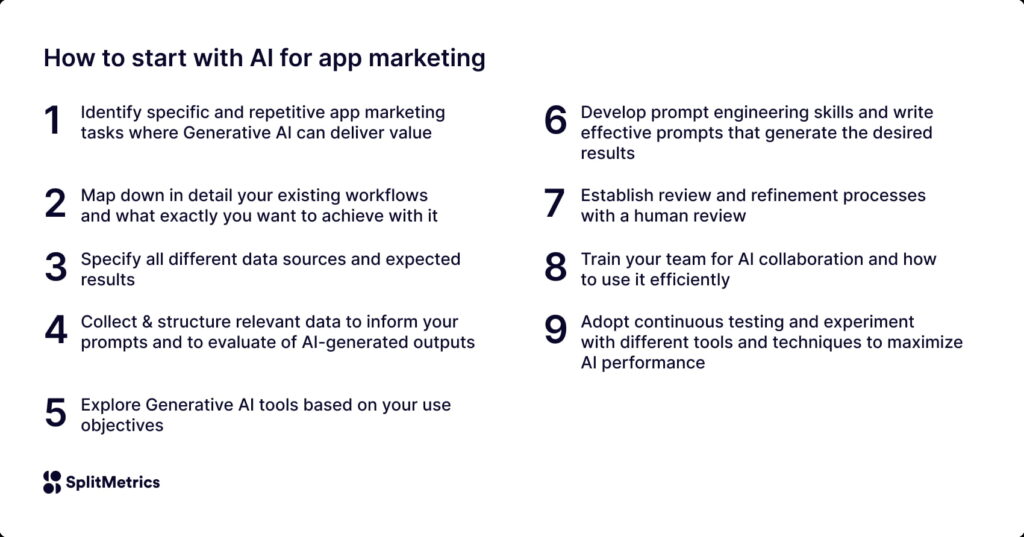
Generative AI empowers you to move beyond manual execution. It automates content creation, accelerates creative workflows, and unlocks new opportunities for personalization across ASO, UA campaigns, and reporting.
Successful implementation in app marketing relies on a structured approach. Define clear use cases, select the right tools, cultivate prompt engineering skills, establish robust review processes, and prioritize continuous learning and experimentation.
Those who strategically integrate Generative AI into their app optimization workflows, combining its power with human insight, will be best positioned to achieve sustainable app growth and marketing success.